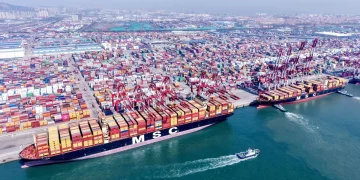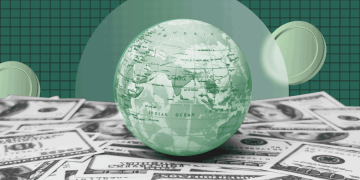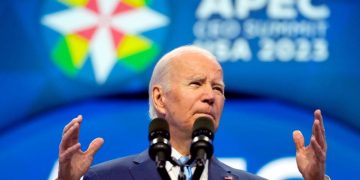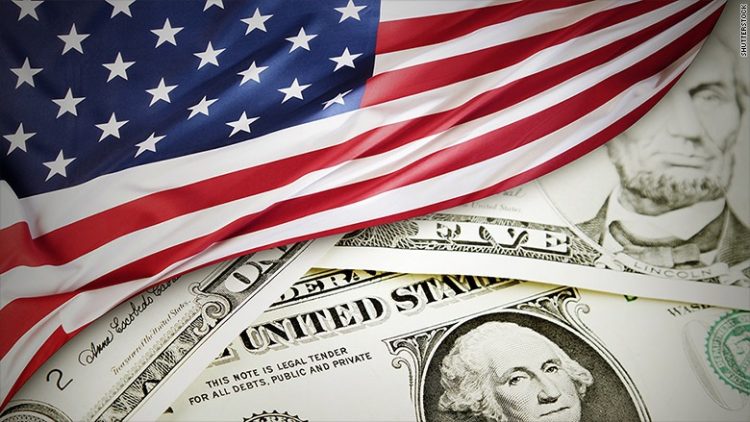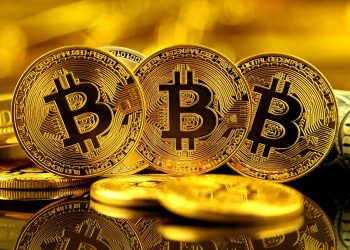The global economy is facing a period of unprecedented challenges, and the economies of the U.S. and Europe are not immune to the headwinds. After a period of rapid growth and recovery following the COVID-19 pandemic, both regions are now experiencing a significant slowdown. Inflation, supply chain disruptions, labor shortages, rising energy costs, and geopolitical tensions are just some of the factors contributing to the reduced economic growth in both the U States and Europe. The global landscape remains uncertain, and navigating this period of uncertainty requires strategic planning, resilience, and effective policy responses.
This article will explore the current economic slowdown in the U.S. and Europe, analyze the key factors contributing to this slowdown, and suggest potential strategies for these economies to manage and adapt to global uncertainty while fostering long-term growth and stability.
1. Understanding the Economic Slowdown in the U.S. and Europe
The economies of the U.S. and Europe have experienced rapid growth in the aftermath of the COVID-19 pandemic, fueled by significant fiscal stimulus, aggressive monetary easing, and a rebound in consumer demand. However, in recent months, both regions have faced slower growth due to several factors:
1.1. Rising Inflation
One of the key contributors to the economic slowdown in both the U.S. and Europe has been the sharp rise in inflation. After a period of relatively low inflation, both regions saw inflationary pressures surge in 2021 and 2022 due to a variety of factors, including:
- Supply Chain Disruptions: The COVID-19 pandemic and subsequent lockdowns disrupted global supply chains, leading to shortages of key goods and higher production costs.
- Energy Prices: The rise in energy prices, especially natural gas and oil, has been a major driver of inflation in both regions. Geopolitical tensions, particularly the war in Ukraine, have further exacerbated these price increases.
- Wage Growth and Labor Market Pressures: In the U.S. and Europe, labor shortages and rising wages have also contributed to inflation, as companies pass on higher labor costs to consumers.
1.2. Monetary Policy Tightening
In response to rising inflation, central banks in both the U.S. and Europe have raised interest rates. The U.S. Federal Reserve has implemented a series of rate hikes to combat inflation, and the European Central Bank (ECB) has followed suit with its own tightening measures. While these actions are necessary to control inflation, they also increase borrowing costs, which can slow down consumer spending and business investment.
1.3. Geopolitical Tensions and Global Uncertainty
The ongoing war in Ukraine has had a far-reaching impact on the global economy, contributing to energy price volatility, disruptions in trade, and a general sense of geopolitical instability. Both the U.S. and European economies are highly integrated into the global economic system, and any disruption in global trade and supply chains can have a negative impact on economic growth.
In addition, trade tensions between major economies, such as the U.S.-China rivalry and rising protectionism, are also contributing to global uncertainty. The U.S. and Europe must contend with these external challenges while managing their own internal economic issues.
2. Key Strategies for the U.S. and Europe to Navigate Global Uncertainty
While the economic slowdown poses significant challenges, both the U.S. and Europe have several tools at their disposal to effectively navigate global uncertainty and foster resilience in their economies. The following strategies can help mitigate the impact of the slowdown and position these regions for long-term stability and growth.
2.1. Strengthening Fiscal Policies to Stimulate Growth
Both the U.S. and Europe can adopt targeted fiscal policies to stimulate economic growth while addressing inflationary pressures. This could include:
- Investing in Infrastructure: Public investments in infrastructure can provide a significant boost to economic growth. Infrastructure projects, such as building and upgrading transportation networks, energy grids, and digital infrastructure, can create jobs, improve productivity, and enhance the long-term competitiveness of the economy.
- Green Energy Transition: The ongoing shift toward renewable energy sources offers a significant opportunity for economic recovery and growth. Both regions can accelerate investments in clean energy infrastructure, including wind, solar, and battery storage technologies. This would not only help address energy supply concerns but also position the U.S. and Europe as leaders in the global green economy.
- Social Safety Nets and Support for Vulnerable Populations: With inflationary pressures eating into the purchasing power of households, particularly in lower-income groups, targeted financial support can help ease the burden. Expanding social safety nets and providing direct assistance to vulnerable populations can improve overall economic stability and maintain consumer confidence.
2.2. Fostering Innovation and Technology Development
The U.S. and Europe can continue to rely on innovation as a key driver of economic growth. Fostering an environment conducive to technological advancement and entrepreneurship will be essential for long-term recovery. Strategies to promote innovation include:
- Investing in Research and Development: Continued investment in R&D, particularly in sectors such as artificial intelligence (AI), biotechnology, and green technologies, will ensure that both regions remain competitive in the global economy. Governments can provide incentives for private companies to invest in cutting-edge technologies that have the potential to drive future economic growth.
- Supporting Startups and Small Businesses: A vibrant startup ecosystem is critical for job creation and economic dynamism. Policies that support entrepreneurship, such as easier access to capital, regulatory reform, and innovation hubs, will help drive the next wave of economic expansion.
2.3. Diversifying Supply Chains and Reducing Dependency on Geopolitical Risks
The COVID-19 pandemic and the war in Ukraine have underscored the vulnerability of global supply chains. Both the U.S. and Europe can take steps to build more resilient supply chains and reduce dependency on countries or regions that are prone to instability. Strategies include:
- Onshoring and Nearshoring: One approach is to bring critical manufacturing and production back to domestic markets or nearby regions. The U.S. and Europe can encourage businesses to relocate or diversify their supply chains to reduce exposure to geopolitical risks in other parts of the world.
- Investment in Digital Supply Chain Solutions: Digital technologies, such as blockchain and AI, can help improve supply chain management by increasing transparency, reducing delays, and improving forecasting. Investing in these technologies can help both regions respond more effectively to future supply chain disruptions.
- Building Strategic Reserves: Both the U.S. and Europe can create strategic reserves of essential goods, particularly energy and pharmaceuticals, to ensure greater resilience during crises.

2.4. Promoting Trade and International Cooperation
Global trade has been a critical engine of growth for both the U.S. and Europe. In the face of growing protectionism, it is vital for these regions to maintain open markets and pursue trade agreements that facilitate economic exchange. Trade agreements can help open up new markets for businesses, reduce tariffs, and create opportunities for growth.
- Pursuing Free Trade Agreements: The U.S. and Europe can continue to engage in multilateral trade agreements with emerging markets and other developed economies. This can help to unlock new sources of demand for goods and services and foster deeper economic integration.
- Strengthening Global Institutions: The U.S. and Europe must also continue to support and strengthen global economic institutions, such as the International Monetary Fund (IMF), the World Trade Organization (WTO), and the World Bank. These institutions can help resolve trade disputes, manage global financial risks, and ensure that economic growth is inclusive and sustainable.
2.5. Addressing Demographic Challenges and Labor Market Issues
Both the U.S. and Europe are facing aging populations, which presents challenges for economic growth and labor markets. To address these demographic issues, both regions must focus on:
- Increasing Workforce Participation: Encouraging greater participation in the workforce, particularly among underrepresented groups such as women, older workers, and minorities, will help mitigate the negative effects of an aging population. Additionally, policies that promote work-life balance, flexible working arrangements, and improved childcare facilities can help integrate more people into the labor force.
- Immigration Policies: Both the U.S. and Europe can reform immigration policies to attract skilled workers from abroad. This can help address labor shortages in critical sectors and provide a source of talent that is essential for technological advancement and economic growth.
- Investing in Education and Reskilling: The rapid pace of technological change means that workers must constantly adapt and reskill to stay relevant in the labor market. Investments in education and vocational training programs will help ensure that workers have the skills necessary to succeed in emerging industries.
3. Conclusion: Resilience in the Face of Uncertainty
The economic slowdown in the U.S. and Europe is a clear signal that global uncertainty is increasing. However, this is not an insurmountable challenge. Both regions have the tools and strategies at their disposal to manage the slowdown and foster sustainable economic growth.
By implementing targeted fiscal policies, investing in technology and innovation, diversifying supply chains, promoting trade, and addressing demographic challenges, the U.S. and Europe can successfully navigate the global uncertainty ahead. The key will be to remain flexible, proactive, and cooperative, both domestically and internationally, to ensure that they can adapt to changing global dynamics and maintain their leadership in the global economy.
The path forward will not be easy, but with sound policy choices and strategic investments, the U.S. and Europe can continue to drive global economic progress, even in the face of uncertain times.



